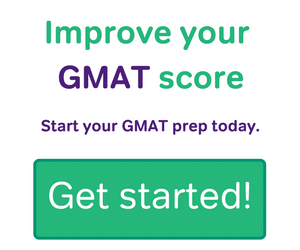
When it comes to business school admissions, the Graduate Management Admission Test (GMAT™) is a critical component of the application process. However, with the introduction of the GMAT™ Focus Edition, potential candidates are faced with a new dimension to consider. This article breaks down the differences between the regular GMAT and the GMAT Focus Edition, and how these variations may affect your scores and percentile rankings.
The GMAT Scoring System
With the introduction of the GMAT Focus Edition, there has been a significant shift in the scoring system which impacts percentile rankings. This new version introduces an updated score scale ranging from 205 to 805, with each score ending in a 5, a clear departure from the traditional GMAT Exam’s 200-800 range. This adjustment enables a clear differentiation between the scores from the GMAT Focus Edition and the traditional GMAT Exam.
Moreover, the GMAT Focus Edition brings a more comprehensive evaluation into play. Unlike its predecessor, which calculated the Total Score based solely on Quantitative and Verbal Reasoning scores, the GMAT Focus Edition incorporates all three sections: Quantitative, Verbal, and Data Insights. Each section contributes equally to the Total Score, with individual section scores ranging from 60 to 90.
What does this mean?
Let’s consider an example to illustrate this difference. If two test takers, John and Jane, take the GMAT and the GMAT Focus Edition respectively, and both score 600 and 605, this does not indicate equivalent performance levels. John, who took the traditional GMAT, achieved his score based solely on his Quantitative and Verbal Reasoning skills. On the other hand, Jane’s score from the GMAT Focus Edition reflects her competencies in Quantitative, Verbal, and Data Insights sections. Hence, while their scores may seem close numerically, Jane’s 605 is a reflection of a broader skill set.
This revised structure emphasizes a multi-faceted approach, underscoring the importance of versatility in skills. By considering your performance across all three areas, the GMAT Focus Edition provides a more holistic view of your prep.
GMAT Focus Score Conversion
To gain an understanding of how the standard GMAT scores align with the GMAT Focus Edition, take a look at the comprehensive Score Concordance table provided below.
| GMAT Score | Percentile Ranking | GMAT Focus Edition Score |
|---|---|---|
| 800 | 100% | 805 |
| 790 | 100% | 805 |
| 780 | 100% | 805 |
| 770 | 100% | 805 |
| 760 | 99% | 715 |
| 750 | 99% | 715 |
| 740 | 98% | 695 |
| 730 | 97% | 695 |
| 720 | 95% | 675 |
| 710 | 93% | 665 |
| 700 | 90% | 655 |
| 690 | 87% | 645 |
| 680 | 83% | 635 |
| 670 | 80% | 615 |
| 660 | 78% | 615 |
| 650 | 75% | 615 |
| 640 | 71% | 595 |
| 630 | 65% | 585 |
| 620 | 63% | 585 |
| 610 | 59% | 575 |
| 600 | 55% | 565 |
| 590 | 51% | 555 |
| 580 | 48% | 555 |
| 570 | 44% | 545 |
| 560 | 41% | 535 |
| 550 | 38% | 525 |
| 540 | 35% | 515 |
| 530 | 32% | 515 |
| 520 | 28% | 495 |
| 510 | 27% | 495 |
| 500 | 25% | 495 |
| 490 | 23% | 485 |
| 480 | 21% | 475 |
| 470 | 19% | 475 |
| 460 | 18% | 465 |
| 450 | 15% | 455 |
| 440 | 14% | 445 |
| 430 | 13% | 445 |
| 420 | 12% | 435 |
| 410 | 10% | 425 |
| 400 | 9% | 415 |
| 390 | 9% | 415 |
| 380 | 8% | 415 |
| 370 | 7% | 405 |
| 360 | 6% | 395 |
| 350 | 6% | 395 |
| 340 | 5% | 385 |
| 330 | 4% | 375 |
| 320 | 4% | 375 |
| 310 | 3% | 355 |
| 300 | 3% | 355 |
| 290 | 2% | 335 |
| 280 | 2% | 335 |
| 270 | 2% | 335 |
| 260 | 2% | 335 |
| 250 | 2% | 335 |
| 240 | 1% | 305 |
| 230 | 1% | 305 |
| 220 | 1% | 305 |
| 210 | 1% | 305 |
| 200 | 0% | 205 |
This table was provided by GMAC. You may also find it helpful to look at the average GMAT scores of top programs.
Final Thoughts
In conclusion, the GMAT Focus Edition has revolutionized the landscape of business school admissions tests, introducing a more comprehensive and holistic evaluation approach. The expansion of the score scale and the inclusion of a third section in the total score calculation provides candidates with a unique opportunity to showcase a wider range of competencies. As a result, it is crucial for candidates to grasp these differences and understand their impact on their scores. By doing so, you can strategically prepare for the exam and ensure that your scores truly reflect your dedication.
Follow the Magoosh GMAT blog to stay up to date on the latest GMAT Focus news, test tips, and strategies.






Leave a Reply